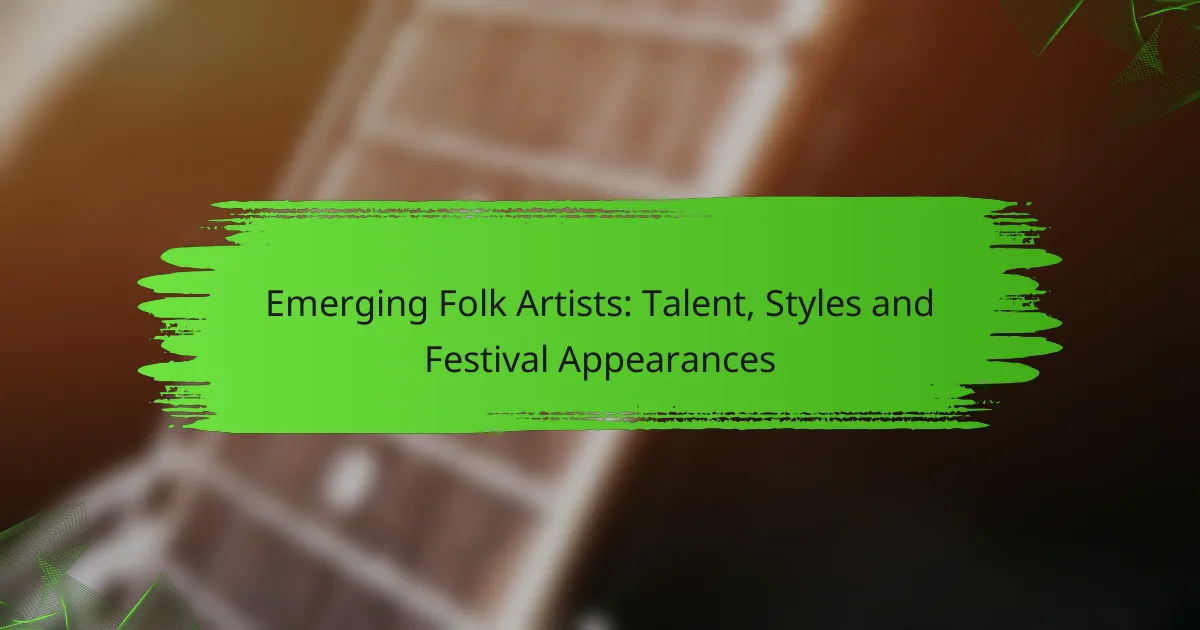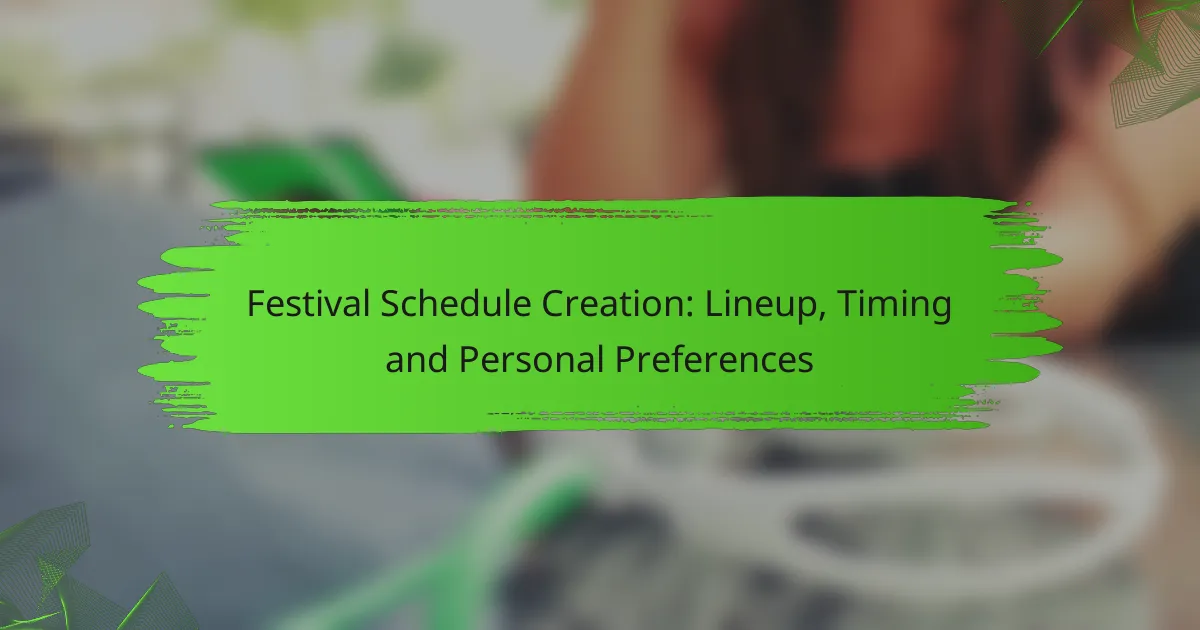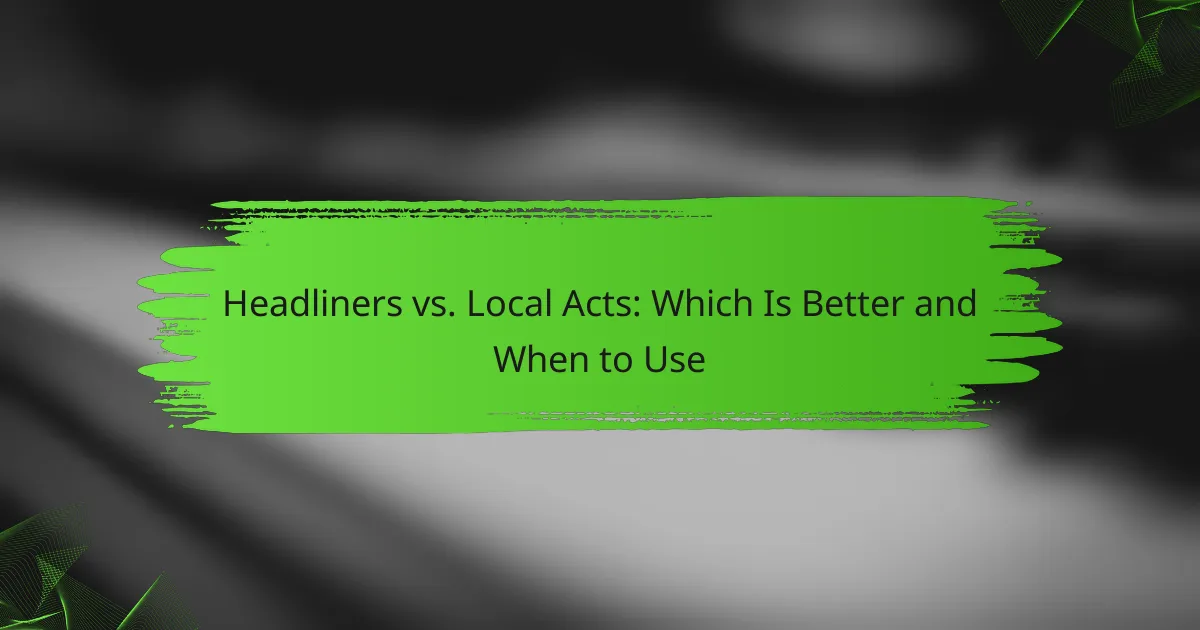In 2023, a wave of emerging folk artists is captivating audiences with their distinctive sounds and engaging performances. These musicians are not only redefining the folk genre but also making their mark at festivals and events around the globe, offering a rich blend of traditional and modern influences.
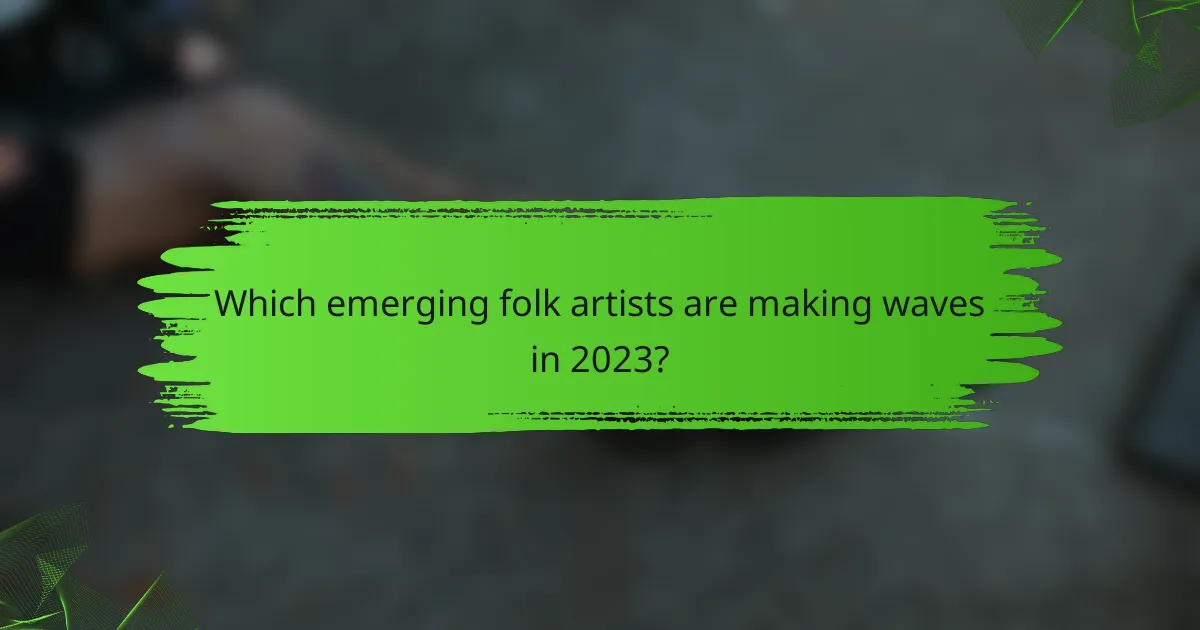
Which emerging folk artists are making waves in 2023?
In 2023, several emerging folk artists are gaining significant attention for their unique sounds and compelling performances. These artists are not only redefining the genre but also captivating audiences at various festivals and events worldwide.
Olivia Chaney
Olivia Chaney is recognized for her ethereal voice and intricate songwriting. Blending traditional folk with contemporary influences, her music resonates with both classic and modern audiences. Chaney’s recent album has received critical acclaim, showcasing her ability to weave personal narratives into her songs.
Her performances often feature a mix of original compositions and traditional folk tunes, making her a favorite at festivals. Attendees appreciate her storytelling ability, which brings a fresh perspective to the folk genre.
Yola
Yola stands out with her powerful vocals and a fusion of folk, soul, and Americana. Her dynamic stage presence and heartfelt lyrics have earned her a loyal following. Yola’s debut album has garnered multiple award nominations, highlighting her impact on the music scene.
Her festival appearances often include collaborations with other artists, further enriching her performances. Fans can expect a blend of emotional depth and energetic rhythms that leave a lasting impression.
Jade Bird
Jade Bird is making her mark with a distinctive style that combines folk with elements of rock and pop. Her catchy melodies and relatable lyrics have resonated with a younger audience, making her a rising star in the folk scene. Bird’s energetic performances are known for their engaging storytelling and authenticity.
She frequently tours and participates in various music festivals, where her performances often feature a mix of upbeat tracks and introspective ballads. This versatility helps her connect with a diverse audience.
Sam Lee
Sam Lee is celebrated for his innovative approach to folk music, incorporating traditional British songs with modern arrangements. His deep understanding of folk traditions allows him to reinterpret classic tunes in a fresh way. Lee’s work often emphasizes the importance of preserving cultural heritage through music.
At festivals, he often collaborates with other musicians, creating a vibrant atmosphere that showcases the richness of folk music. His performances are not just concerts; they are immersive experiences that invite audience participation.
Adrianne Lenker
Adrianne Lenker, the frontwoman of Big Thief, has gained recognition for her solo work that explores intimate themes through a folk lens. Her poetic lyrics and haunting melodies create a deeply personal listening experience. Lenker’s music often reflects her connection to nature and the human experience.
Her festival sets are known for their emotional depth, often leaving audiences in reflective silence. Lenker’s ability to convey vulnerability through her songs makes her a standout artist in the current folk landscape.
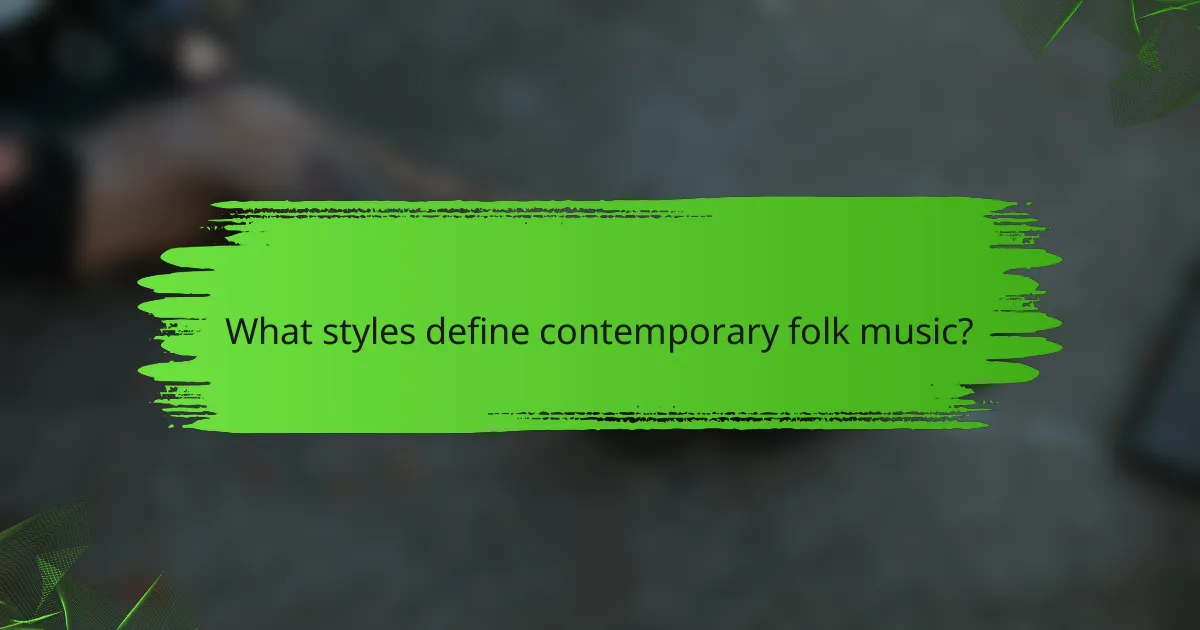
What styles define contemporary folk music?
Contemporary folk music encompasses a variety of styles that blend traditional elements with modern influences. Key styles include acoustic storytelling, indie folk fusion, traditional folk revival, and Americana influences, each contributing to the genre’s rich tapestry.
Acoustic storytelling
Acoustic storytelling is a hallmark of contemporary folk music, focusing on narrative-driven lyrics delivered through simple instrumentation. Artists often use personal experiences or social commentary to engage listeners, creating a deep emotional connection.
Common instruments in this style include acoustic guitars, banjos, and harmonicas, which enhance the intimate feel of the music. Notable artists like Joan Baez and Bob Dylan exemplify this approach, using their songs to tell compelling stories.
Indie folk fusion
Indie folk fusion blends traditional folk elements with influences from indie rock and pop, resulting in a fresh sound that appeals to a diverse audience. This style often features unconventional song structures and experimental instrumentation.
Artists such as Sufjan Stevens and Fleet Foxes are known for their unique takes on folk music, incorporating electronic sounds and layered harmonies. This fusion allows for greater artistic expression and experimentation within the folk genre.
Traditional folk revival
The traditional folk revival focuses on preserving and revitalizing the sounds and themes of historical folk music. This style often includes covers of classic songs and the use of traditional instruments, aiming to keep the cultural heritage alive.
Artists like Pete Seeger and Woody Guthrie played significant roles in this revival, bringing attention to folk traditions and social issues through their music. Festivals celebrating traditional folk often feature workshops and performances that educate audiences about the genre’s roots.
Americana influences
Americana influences in contemporary folk music draw from a mix of American roots music, including blues, country, and rock. This style reflects the diverse musical landscape of the United States, often addressing themes of identity and place.
Musicians like Jason Isbell and Brandi Carlile exemplify Americana’s impact on folk music, blending storytelling with a variety of musical styles. This genre encourages artists to explore their cultural backgrounds while connecting with broader audiences through relatable themes.

Where can you find emerging folk artists performing?
Emerging folk artists can be found performing at various venues, festivals, and online platforms. These artists often showcase their talents in settings that foster intimate connections with audiences, making it easier for fans to discover new music.
Major music festivals
Major music festivals are prime locations for discovering emerging folk artists. Events like Newport Folk Festival in the United States and Green Man Festival in Wales often feature a mix of established and up-and-coming talent. Attendees can enjoy a diverse lineup, with performances that highlight the unique styles of new folk musicians.
When attending these festivals, consider arriving early to catch lesser-known acts, as they may perform on smaller stages. This can lead to discovering hidden gems before they gain wider recognition.
Local venues in Nashville
Nashville, known as the heart of country music, is also a vibrant hub for folk artists. Local venues such as The Basement and The Bluebird Cafe frequently host emerging talent, providing an intimate setting for performances. These venues often have open mic nights, allowing new artists to showcase their work.
Check the venue schedules regularly, as many artists announce their shows last minute. Engaging with local music communities online can also help you stay updated on upcoming performances.
Folk music showcases in London
London hosts numerous folk music showcases that spotlight emerging artists. Venues like The Islington and The Old Blue Last are known for featuring new talent in the folk genre. These showcases often include a mix of solo acts and bands, providing a platform for diverse musical expressions.
Attending these events can be a great way to experience the local folk scene. Look for themed nights or collaborations that may introduce you to artists from different backgrounds and styles.
Online streaming concerts
Online streaming concerts have become a popular way to discover emerging folk artists. Platforms like YouTube, Instagram Live, and Bandcamp allow artists to reach global audiences without geographical limitations. Many artists host live sessions where they perform original songs and interact with fans in real time.
To find these concerts, follow your favorite emerging artists on social media and subscribe to their channels. Many artists also announce upcoming streams through newsletters, so signing up can keep you informed about their latest performances.
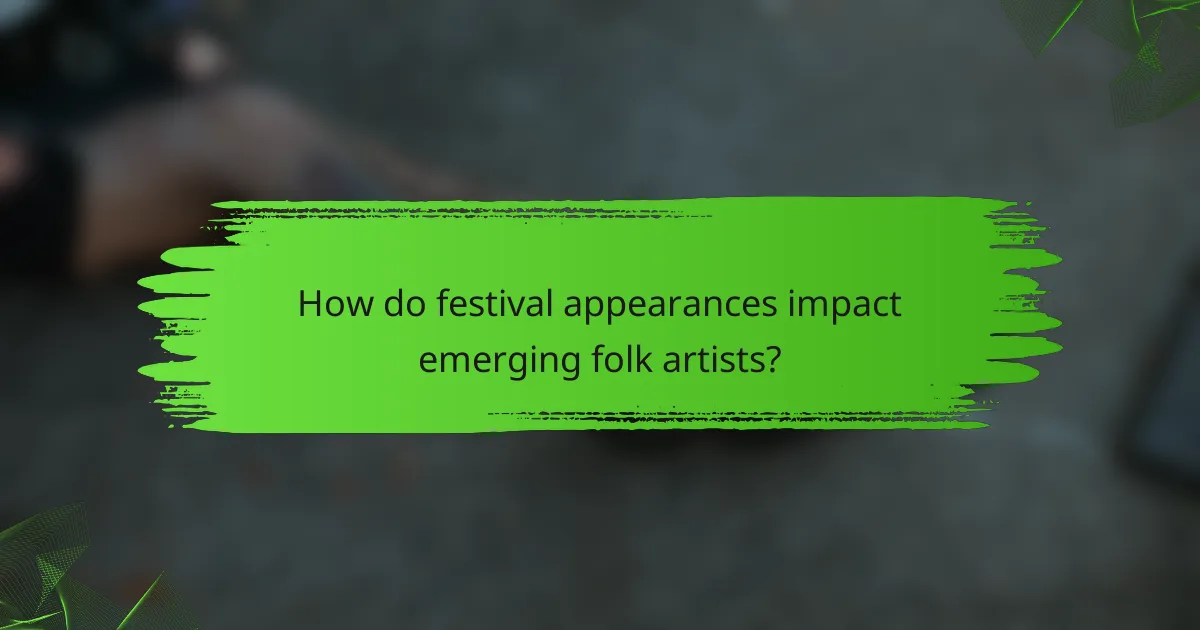
How do festival appearances impact emerging folk artists?
Festival appearances significantly enhance the visibility and opportunities for emerging folk artists. By performing at these events, artists can reach new audiences, build connections, and gain exposure to industry professionals who can help advance their careers.
Increased visibility
Performing at festivals allows emerging folk artists to showcase their talent to larger audiences, often numbering in the thousands. This exposure can lead to increased fan engagement and social media following, as attendees share their experiences online.
Artists can also benefit from the festival’s marketing efforts, which typically include promotional materials and social media campaigns. This collective visibility can elevate an artist’s profile in a competitive music scene.
Networking opportunities
Festivals provide a unique environment for emerging artists to connect with other musicians, industry insiders, and potential collaborators. These interactions can lead to future gigs, joint projects, or even mentorship opportunities.
Engaging with fellow artists at festivals can also foster a sense of community, which is crucial for support and growth in the folk music genre. Building these relationships can be instrumental in navigating the music industry.
Access to industry professionals
Many festivals attract talent scouts, booking agents, and record label representatives looking for new artists to promote. Emerging folk artists can leverage these events to make valuable connections that may lead to record deals or performance opportunities.
To maximize this access, artists should prepare a strong presentation of their work, including promotional materials like press kits and demo recordings. Being proactive in networking can significantly enhance the likelihood of catching the attention of industry professionals.

What are the criteria for selecting emerging folk artists for festivals?
Emerging folk artists are typically selected for festivals based on their musical originality, audience engagement, and social media presence. These criteria help festival organizers identify talent that resonates with audiences and contributes to the overall festival experience.
Musical originality
Musical originality is crucial for emerging folk artists, as it sets them apart in a crowded genre. Unique compositions, innovative arrangements, and distinct vocal styles can capture the attention of festival curators. Artists should aim to blend traditional folk elements with contemporary influences to create a fresh sound.
To assess originality, festival organizers often listen for creative songwriting and distinctive instrumentation. Artists might consider experimenting with different genres or incorporating unconventional instruments to enhance their appeal.
Audience engagement
Effective audience engagement is a key factor in selecting emerging folk artists for festivals. Artists who can connect with their audience through storytelling, interactive performances, or relatable themes are more likely to be chosen. Engaging performances can lead to memorable experiences that resonate long after the festival ends.
To improve audience engagement, artists should practice their stage presence and consider incorporating call-and-response elements or inviting audience participation. Building a rapport with fans during and after performances can also foster a loyal following.
Social media presence
A strong social media presence is increasingly important for emerging folk artists seeking festival appearances. Platforms like Instagram, Facebook, and TikTok allow artists to showcase their music, share behind-the-scenes content, and connect with fans. A robust online following can demonstrate an artist’s popularity and potential draw for festivals.
Artists should focus on creating engaging content that highlights their music and personality. Regular updates, interactive posts, and collaborations with other artists can enhance visibility. Monitoring engagement metrics can help artists refine their strategies and better understand their audience’s preferences.
